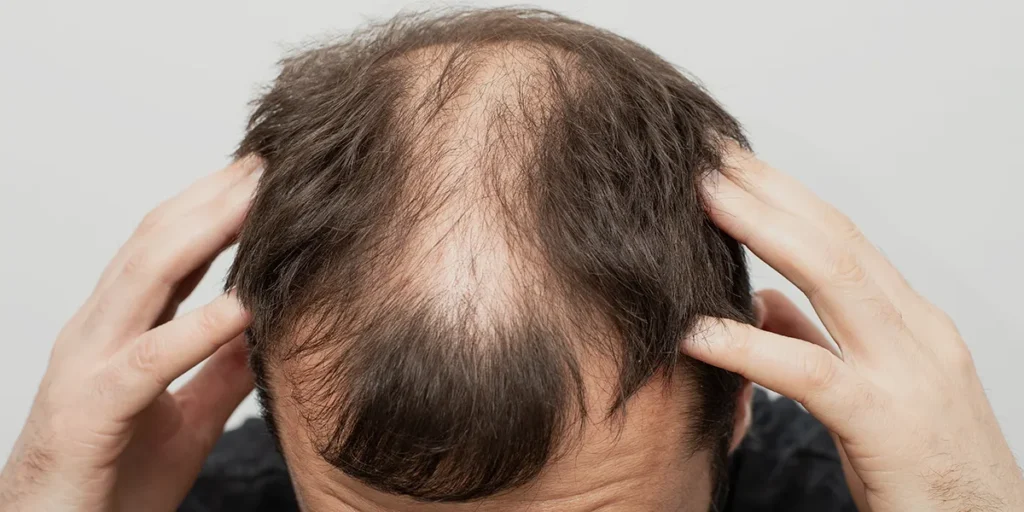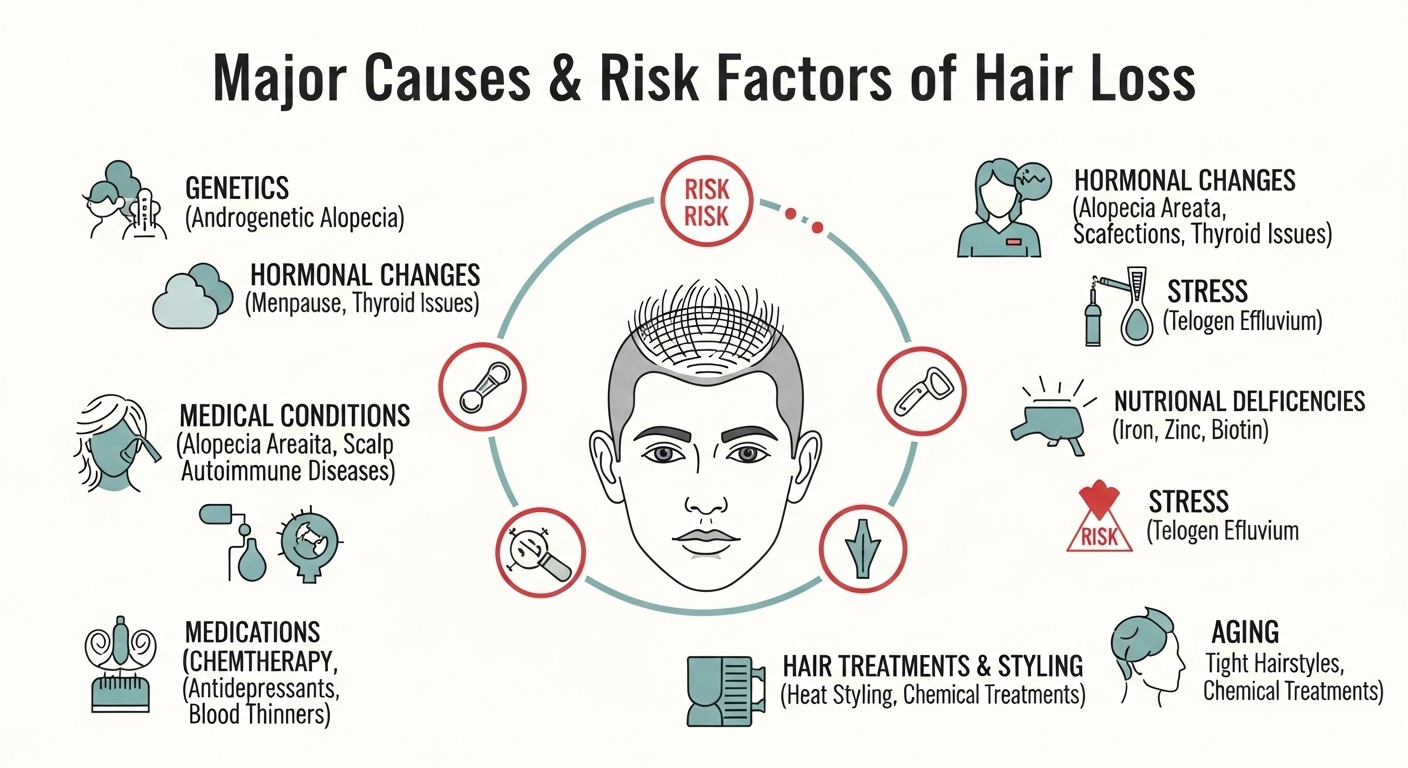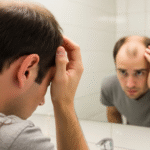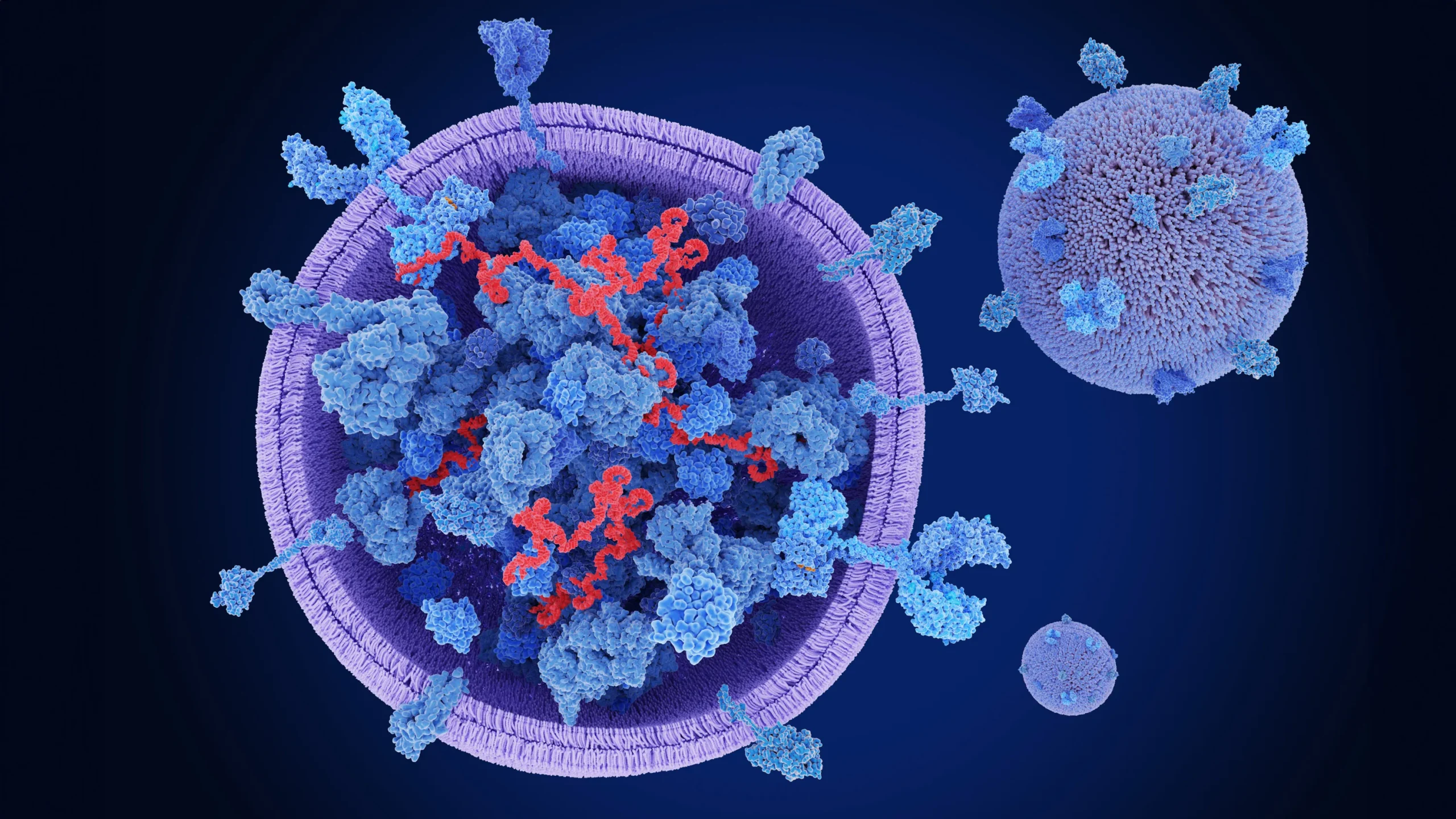Summary This article explains what slash hair loss means, its main causes, and different types of hair loss. It highlights medical and lifestyle treatments that can slow shedding and support regrowth. You’ll also find prevention tips, expert insights, and a clear recovery timeline to help restore healthy hair with confidence. Introduction Are you worried about …
Summary
This article explains what slash hair loss means, its main causes, and different types of hair loss. It highlights medical and lifestyle treatments that can slow shedding and support regrowth. You’ll also find prevention tips, expert insights, and a clear recovery timeline to help restore healthy hair with confidence.

Table of Contents
Introduction
Are you worried about slash hair loss and looking for trusted ways to manage it? This guide breaks down the most common causes, effective treatments, and a step-by-step recovery timeline. You’ll also discover expert insights, case studies, and prevention strategies to help you regain confidence and take control of your hair health.
What Exactly is Slash Hair Loss?
Definition and Overview
Hair loss, medically known as alopecia, refers to excessive shedding or thinning of hair from the scalp or body. The term “slash hair loss” is often used informally to describe aggressive or noticeable thinning that seems to progress quickly.
Types of Hair Loss
- Androgenetic Alopecia: Male or female pattern baldness caused by genetics and hormones.
- Alopecia Areata: Patchy hair loss due to autoimmune attacks on follicles.
- Telogen Effluvium: Temporary shedding often triggered by stress, illness, or medication.
- Scarring Alopecia: Permanent loss where follicles are destroyed by inflammation.
How “Slash Hair Loss” Fits In
When hair loss feels sudden or more severe than expected, many people describe it as “slash” hair loss. It often reflects an accelerated phase of one of the above conditions.
How Hair Grows: The Hair Cycle & Its Role in Hair Loss
Phases of Hair Growth
Hair doesn’t grow continuously but cycles through:
- Anagen: Growth phase lasting 2–6 years.
- Catagen: Short transition phase.
- Telogen: Resting phase when shedding occurs.
- Exogen: Active shedding of old hairs.
How Disruption Leads to Shedding
When this cycle is disturbed—by hormones, illness, or stress—more hairs shift into the telogen or exogen phase, causing visible thinning or patches.
Major Causes & Risk Factors of Slash Hair Loss

Genetic Predisposition & Hormonal Influences
Most permanent hair loss is genetic. Male pattern baldness affects over 50% of men by age 50. In women, hormonal shifts (menopause, PCOS, thyroid issues) play a major role.
Medical Conditions
- Thyroid imbalances
- Autoimmune diseases (alopecia areata, lupus)
- Scalp infections like ringworm
Lifestyle, Nutrition & Environmental Stressors
Crash dieting, iron deficiency, and vitamin D deficiency are common triggers. Pollution and harsh chemical exposure can also worsen shedding.
Role of Stress & Mental Health
According to dermatologists, prolonged stress increases cortisol levels, which push hair prematurely into the shedding phase.
Diagnosing Hair Loss: What to Do & When to See a Specialist
Signs and Severity Indicators
- Sudden bald patches
- Shedding more than 100 strands daily
- Thinning along the crown or temples
- Visible scalp irritation or itching
What a Doctor Will Check
- Family history of baldness
- Medications currently in use
- Recent illnesses or major stress events
Diagnostic Tests
- Blood tests (iron, thyroid, vitamin levels)
- Scalp biopsy in severe cases
- Dermoscopy to examine follicles
Treatments for Slash Hair Loss
FDA-Approved Medical Treatments
- Minoxidil (topical): Stimulates follicle activity and extends growth phase.
- Finasteride (oral): Blocks DHT, a hormone that shrinks follicles.
Non-Medical and Alternative Treatments
- Low-level laser therapy: Increases blood circulation in the scalp.
- PRP (Platelet-Rich Plasma): Injects growth factors directly into follicles.
- Microneedling: Stimulates natural repair and regrowth.
Experimental / Emerging Therapies
Stem cell therapy and JAK inhibitors are being studied as promising future options.
Holistic & Lifestyle-Based Approaches
- Balanced diet rich in protein, zinc, and vitamin D
- Scalp massage with essential oils
- Gentle hair care routines to reduce breakage
Prevention & Maintenance: How to Reduce Further Loss and Support Regrowth
Daily Hair Care Habits
- Use sulfate-free shampoos
- Avoid tight hairstyles
- Limit heat styling tools
Nutrition & Dietary Tips
- Include leafy greens, eggs, and fish in your meals
- Stay hydrated to improve follicle health
Managing Stress & Sleep
Mindfulness practices, yoga, and 7–8 hours of sleep can improve overall hair health.
Avoiding Environmental Exposures
Wear hats in the sun, reduce chlorine exposure, and avoid harsh chemicals.
Real-Life Stories & Expert Insights
Case Studies & Patient Experiences
A 32-year-old patient experiencing sudden shedding due to stress saw significant improvement after 6 months of combined minoxidil and diet changes.
Myths Debunked
- Myth: Shampooing daily causes baldness.
- Truth: Shampoo cleanses the scalp but doesn’t cause hair loss.
Timeline: What to Expect When Recovering Hair Loss
Short-Term Recovery (First Weeks)
Some shedding may continue while treatments start working.
Medium Term (3–6 Months)
Noticeable thickening and reduced shedding for many patients.
Long Term (6–12 Months)
Visible regrowth, stronger hair shafts, and restored density.
Factors Affecting Recovery
Age, genetics, medical conditions, and consistency in treatment.
When to Seek Professional Help
Warning Signs
- Bald patches appearing in weeks
- Sudden shedding after medication use
- Scalp inflammation with pain or redness
Choosing the Right Specialist
Look for a board-certified dermatologist or trichologist with proven experience in hair restoration.
Consultation Checklist
Discuss potential side effects and timelines
Ask about diagnostic tests
Inquire about FDA-approved options
FAQs
Is hair loss reversible?
It depends on the type—genetic loss is slowed, while temporary shedding often reverses.
How much shedding is normal daily?
Up to 100 hairs is normal; more may indicate a problem.
When should I see a doctor?
If shedding is sudden, patchy, or accompanied by scalp irritation.
Are natural remedies effective?
Some, like rosemary oil and scalp massage, have limited but positive evidence.
Can stress alone cause permanent baldness?
Usually temporary, but chronic stress can worsen genetic loss.
Ready To Take Your Next Steps
Hair loss doesn’t have to define your confidence. With early action and the right treatment plan, recovery is possible. Book a consultation with Dr. Uzma Irfan in Islamabad today to explore tailored solutions and start your journey toward regaining healthy, fuller hair.






